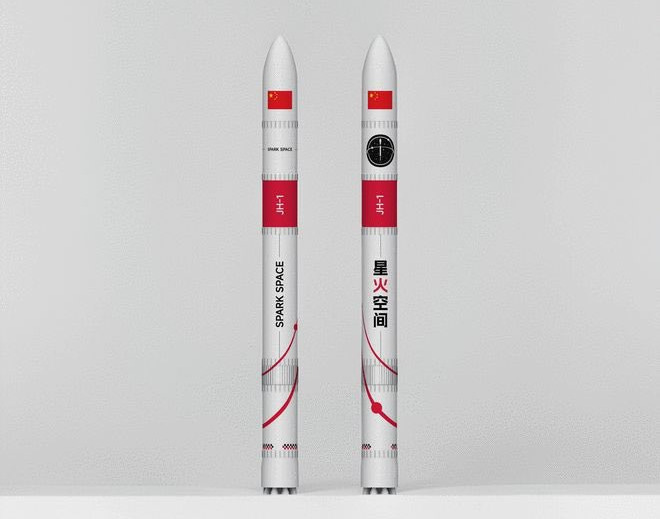New Launch Startup Bets on Electrically Driven Engines
If developed, the engines would be the first-of-their-kind in China.
Another new commercial rocket in China has been unveiled, but this one plans to use an electric-pump-fed engine cycle.
New launch startup Spark Space (星火空间), full business name Hefei Spark Space Technology Co Ltd (合肥星火空间科技有限公司), has recently emerged into the public eye, announcing the completion of an angel funding round on September 16th. The angel funding round was stated to be 55 million Yuan (approximately 7.74 million United States dollars, as of September 17th), following a seed round that raised 10 million Yuan, for a total amount of financing raised of almost 100 million Yuan (14 million United States Dollars).
As the business name implies, the company is based in the city of Hefei (合肥市), since its founding in May 2024, to take advantage of and grow the existing cluster of space enterprises. Investors in Spark Space are also based around the city, some of which are owned by the local government, according to publicly available information.
For their launch vehicle, Spark Space differs from most recent Chinese startups, going for a smaller rocket that will likely be expendable, at least initially. That rocket, called Evolution-1 (进化一号), or Jinhua-1 for the JH-1 designation, will reportedly be focused on providing low-cost, high-reliability, and rapid response launch solutions for small satellites. Some market interest is said to have already been generated for the launch vehicle, for offerings including constellation launch and hypersonic testing.
While specifics on the size and payload capability of the rocket were not shared, it will likely be a two-stage vehicle with ten engines in total, nine on the first-stage1 and one on the second-stage. The rocket’s lift capacity will likely be greater than that of Ceres-1 but less than Jielong-3.
In a departure from China’s space sector, Evolution-1’s engines, called Lieyan-2 (烈焰二号), are running an electric-pump-fed cycle2 for a first-of-their-kind engine in the country. Each Lieyan-2 engine is being designed to produce 10 tons of thrust through burning rocket-grade kerosene and liquid oxygen, giving Evolution-1 a liftoff thrust of 90 tons. Spark Space’s reasoning for using an electric engine cycle was as follows:
“The core advantages of electric pump circulation lie in its simplified structure, high specific impulse, and low cost. By replacing traditional turbine pumps with electric pumps, we not only reduce fuel consumption but also significantly cut manufacturing costs.”
There are some additional advantages of an electric cycle, including greater thrust control capability and being able to use more of the total propellant onboard a rocket. However, a major disadvantage of the cycle is the need to carry batteries onboard, adding mass to a launch vehicle. But if any country can make light and high-density batteries while being cheap enough for mass production, it would be China, having made yet another breakthrough in battery technology for electric vehicles (of which 12.8 million were made last year).
Venture capital firms already invested in Spark Space are confident in the launch company’s possibilities, with a representative of the city-owned Hefei Industrial Investment Capital (合肥产投资本) sharing:
“As a pioneer of China's first electric pump-fed liquid launch vehicle, Spark Space adopts an industrialized commercial aerospace development model, highly aligned with Hefei's space industry direction. We look forward to accelerating the company's rapid growth through the dual drive of capital and policy support.”
Another investment firm, Jinsha Capital (锦沙资本), had a representative add:
“China's rocket market has seen many excellent companies achieve major breakthroughs, but we remain optimistic about the enormous long-term opportunities in small satellite launches, large constellation deployments, flexible customization, and small to medium-sized, low-cost rockets. Spark Space adopts a differentiated competitive strategy with clear technical roadmap and strong team execution.”
If there are any problems with these translations please reach out and correct me.
The first-stage engine count was stated in Chinese-language reporting.
This cycle uses an electric motor to power the fuel and oxidizer pumps to flow propellant into the engine’s combustion chamber. It has previously been used on the Agena upper-stage, Rocket Lab’s Rutherford, and Astra Space’s Delphin.




